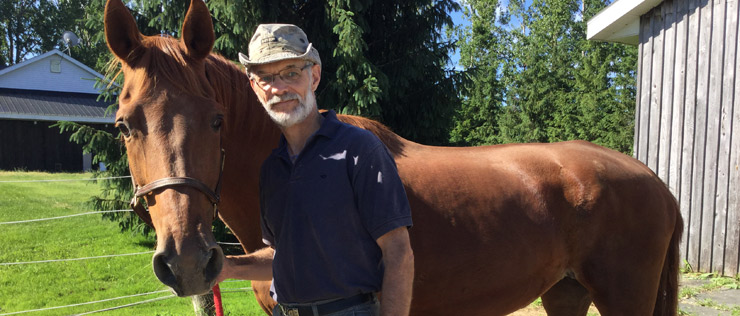
Stephen Wilson of Iroquois, Ontario avoided unnecessary treatments and side-effects by opting for regular monitoring of his slow-growing prostate cancer.
Dairy plant manager Stephen Wilson faced a tough choice. In December 2012, he had just been diagnosed with a slow-growing prostate cancer that posed little risk to his health. His oncologist in Cornwall recommended monitoring and regular tests, but a U.S. doctor told him he needed surgery right away.
So Wilson paid a visit to Dr. Rodney Breau at The Ottawa Hospital to explore using the da Vinci Surgical System to remove the cancer.
Dr. Breau did a second biopsy of Wilson’s prostate and found no additional cancer cells. The doctor informed Wilson about potential side-effects from treatment, including urinary incontinence, sexual dysfunction and bowel problems. Given that the cancer was slow growing, Dr. Breau recommended against treatment and for regular monitoring and testing, also known as active surveillance.
“He told me ‘If you were my father, I would recommend surveillance,’” said Wilson.
Between the reassuring biopsy and Dr. Breau’s explanation of his options, Wilson chose active surveillance.
“Low-grade prostate cancer can grow very slowly, and therefore many patients likely don’t need treatment at all,” said Dr. Breau, a prostate cancer surgeon and epidemiologist at The Ottawa Hospital and the University of Ottawa. “Some men can go for years, or maybe their entire lives, without the cancer spreading.”
Dr. Breau recently published a study on active surveillance at The Ottawa Hospital, which found that the number of patients choosing this option increased dramatically from 32 percent to 68 percent between 2008 and 2013.
Active surveillance also seems to be gaining popularity south of the border. According to a recent front-page article in the The New York Times, nearly half of men diagnosed with early-stage prostate cancer in the United States are now choosing the technique over surgery and radiation.
Now retired, 56-year-old Wilson enjoys working on his hobby farm with his wife, three horses, three cats and a dog. He has come to terms with the cancer in his body.
“You have to live with the notion that it’s there,” said Wilson. “But I have a background in science which allowed me do that without any problems. Now it’s been three years and I’m good. Active surveillance has been the right choice for me.”

Support patient care and research at
The Ottawa Hospital


 To reset, hold the Ctrl key, then press 0.
To reset, hold the Ctrl key, then press 0.